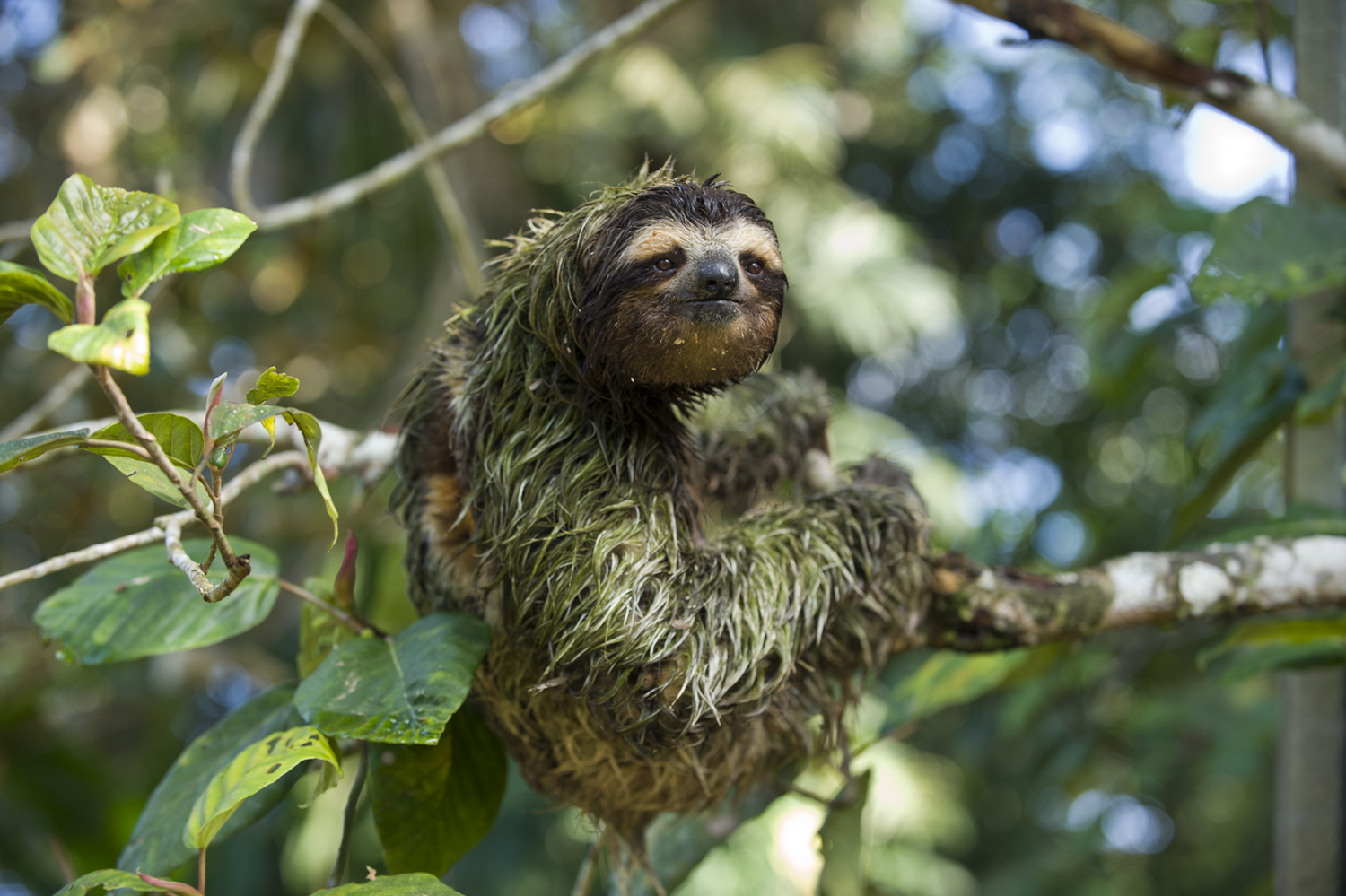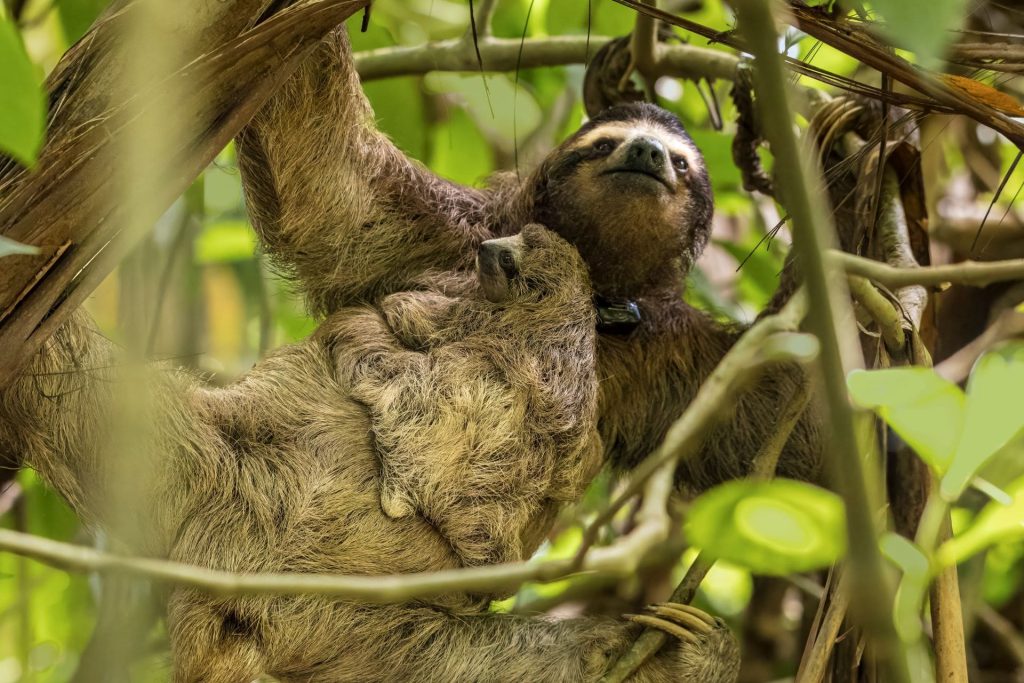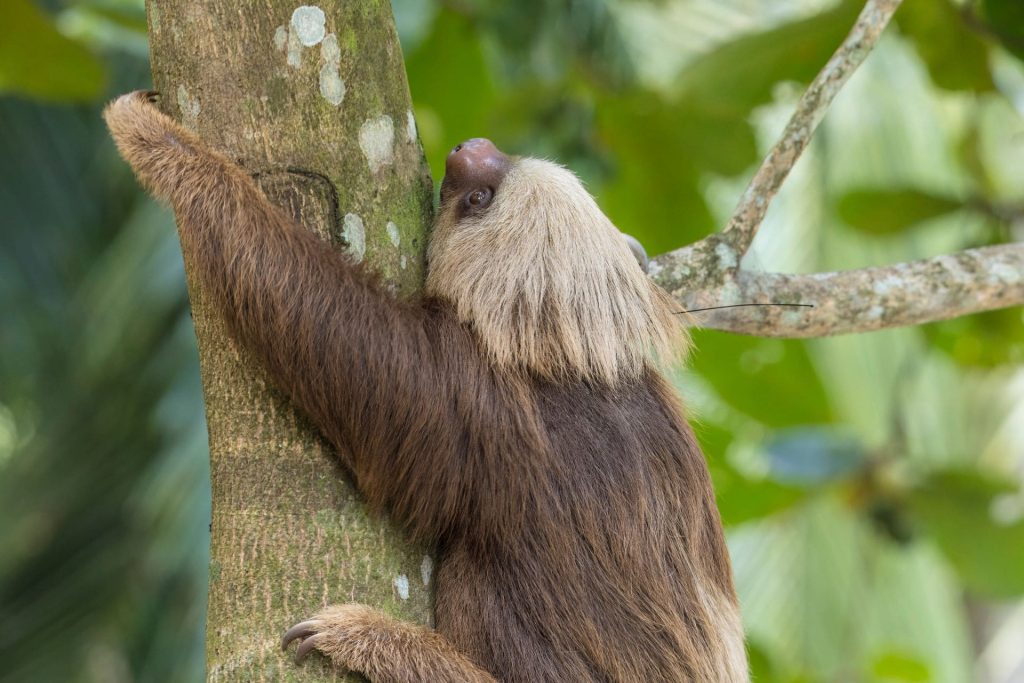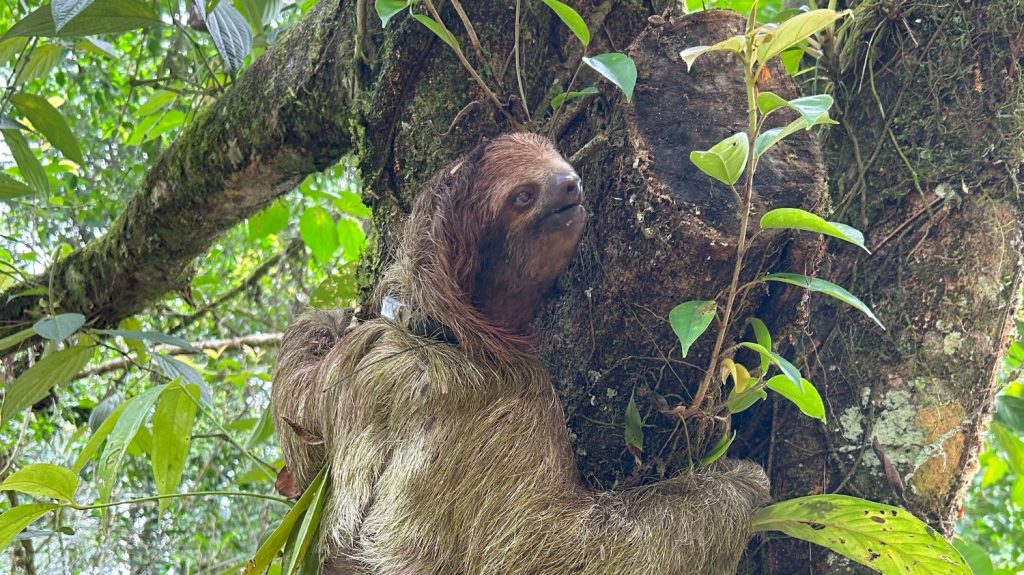Could Antibiotic-Producing Sloth Fur Be the Key to Fighting Bacteria Resistance?
Recent research has shown that sloths in Costa Rica have bacteria in their fur that produces antibiotics. Could this finding have application in humans?
Researcher Max Chavarría, from the University of Costa Rica, tries to answer this question after studying the unique biome of insects, fungi, algae, and bacteria that lives in the sloths’ fur.
A balanced ecosystem
The hair of sloths has micro-cracks, creating a perfect place for bacteria, green algae, and fungi to attach and thrive. One of the first research about these microorganisms studied sloth fungal species in 2014 and discovered that certain strains could potentially treat malaria, Chagas disease, and even breast cancer.
“If you see the fur of a sloth, you see movement, you see moths, you see different types of insects (…), There is an extensive habitat, and clearly, when there is a coexistence of many kinds of organisms, there must also be systems that control them “, explained Chavarría to AFP.

The research
The scientists verified that there are microorganisms capable of producing antibiotics that make it possible to regulate the presence of pathogens in the sloths’ fur.
“These are bacteria belonging to the order of micrococcal, mainly from the genera Rothia and Brevibacterium,” says the researcher, whose discovery was published in the scientific journal Environmental Microbiology.

(A) Choloepus hairs are filament-like structures. (B) Filaments present a width of 138 13 μm. (C) The hair presents multiple cavities along its longitude. (D) These cavities seem to be the niche for the microbial community inhabiting sloth hair. (E) The higher abundance of microorganisms in these furrows is probably associated to the lack of mechanical stress they suffer. (F) Most microorganisms presented a coccoid-shape morphology, also some rod-shaped microorganisms were present. (G) Bradypus hair is smoother. (H) It has an average width of 261 36 μm. (I) It presents irregular fissures throughout the entire hair longitude. (J) Microorganisms survive on hair surface. (K) Bacilli-shaped and some coccoid-shaped bacteria are observed across the hair. (L) The density of microorganisms is lower probably as a consequence of the hair morphology. Source: Antibiotic-producing Micrococcales govern the microbiome that inhabits the fur of two- and three-toed sloths
Chavarría and his colleagues cut hair from the back of 15 specimens of sloths of each species (Bradypus variegatus and Choloepus hoffmanii) in rehabilitation in a rescue center. However, further research on wild sloths is necessary to gain a more comprehensive understanding of the microbiota in these mammals. For instance, captive sloths do not typically have the green algae Trichophilus in their fur, which can significantly impact the microbiota.

Sloth antibiotics for Human application?
After discovering these antibiotics in sloths, Chavarría wonders if his finding may have future uses in medicine that help counteract the resistance to antibiotics that humans develop. The World Health Organization estimates that by 2050 antibiotic resistance could cause 10 million deaths yearly. “The search for new strategies to combat antibiotic resistance has remained in the hands of academia,” Chavarría points out.
However, there are still numerous steps to be taken before considering its application to humans.

“Before thinking about an application in human health, it is important first to understand the system and what are the types of molecules that are involved,” says the researcher, who believes that nature is a natural laboratory.
“That is why projects like ours can contribute to finding new molecules that can, in the medium or long term, be used in this battle we are having of resistance to antibiotics,” he adds.
-Cecilia Pamich
Communications and Outreach









